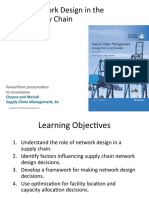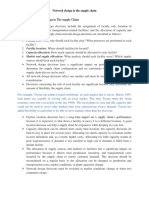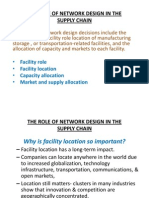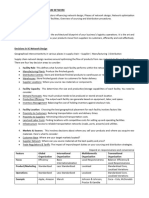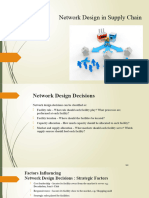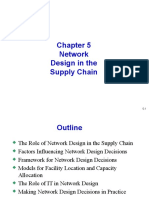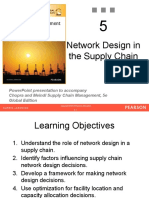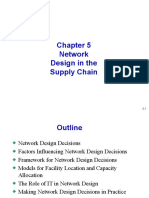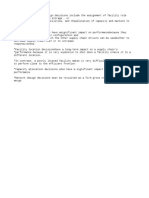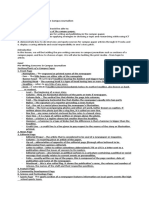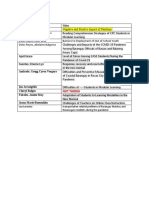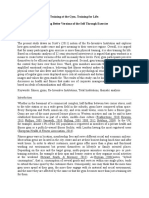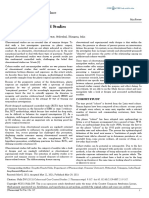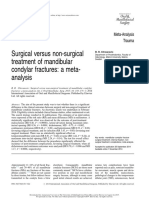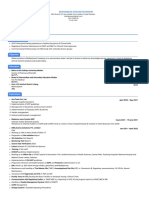0% found this document useful (0 votes)
94 views4 pagesChapter 5
This document discusses network design in supply chains. It outlines the key decisions in network design as facility role and location, capacity allocation, and market allocation. It then examines factors that influence these decisions such as strategic considerations, technology, macroeconomic issues, politics, infrastructure, competition and costs. Finally it presents a framework for network design decisions involving defining a strategy, regional configuration, site selection, and final location choices supported by optimization models.
Uploaded by
Ian Dante ArcangelesCopyright
© © All Rights Reserved
We take content rights seriously. If you suspect this is your content, claim it here.
Available Formats
Download as DOCX, PDF, TXT or read online on Scribd
0% found this document useful (0 votes)
94 views4 pagesChapter 5
This document discusses network design in supply chains. It outlines the key decisions in network design as facility role and location, capacity allocation, and market allocation. It then examines factors that influence these decisions such as strategic considerations, technology, macroeconomic issues, politics, infrastructure, competition and costs. Finally it presents a framework for network design decisions involving defining a strategy, regional configuration, site selection, and final location choices supported by optimization models.
Uploaded by
Ian Dante ArcangelesCopyright
© © All Rights Reserved
We take content rights seriously. If you suspect this is your content, claim it here.
Available Formats
Download as DOCX, PDF, TXT or read online on Scribd
/ 4








